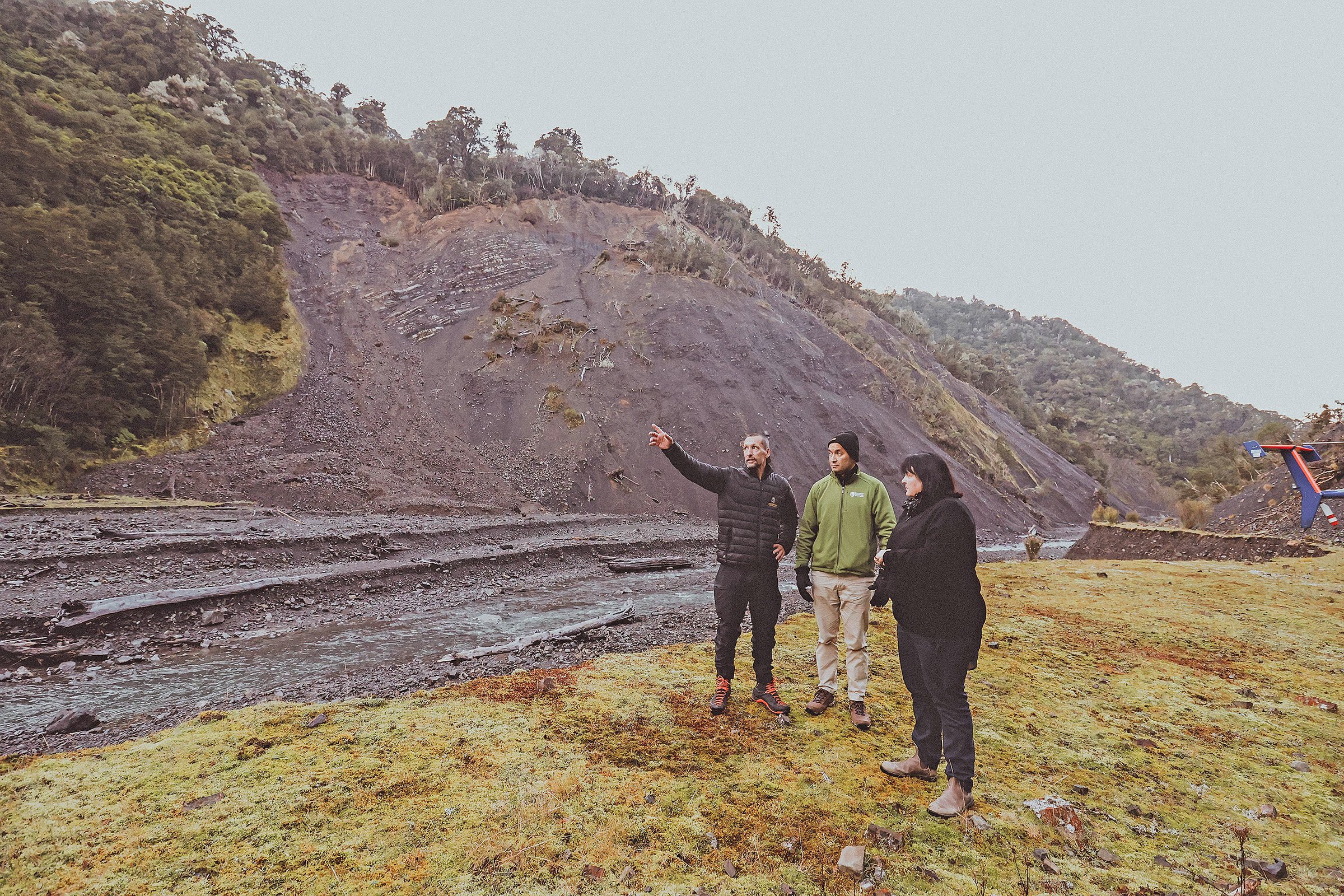Backing iwi-led biodiversity protection

CONSERVATION EFFORT: Raukūmara Pae Maunga aerial deer and goat culler Caleb Wharepapa, left, talks about the project’s conservation efforts with Conservation Minister Tama Potaka and MP for East Coast Dana Kirkpatrick on a recent trip. Photo supplied
News Editor
A $6 million investment into the Raukūmara Pae Maunga restoration project will fortify local employment and iwi-led conservation against destructive pests, Conservation Minister Tama Potaka says.
The Minister was at Te Kaha yesterday where he announced a $2 million a year investment over three years to 2028, drawn from the $55 million additional conservation funding budgeted for 2026/27 from the International Visitor Conservation and Tourism Levy.”
Located in the Raukūmara Range, the restoration project is a partnership between Ngāti Porou, Te-Whānau-ā-Apanui and the Department of Conservation - Te Papa Atawhai delivering large-scale pest control, forest regeneration, community engagement, and species protection.
“This beautiful native forest harbours critically endangered pepeketua/Hochstetter’s frog and Raukūmara/tusked wētā, brown kiwi, whio, and pekapeka/ long–tailed bats – all suffering the perils of deer, goats and possums.
“We’re boosting protection by backing the project, which employs 28 local iwi staff providing specialist conservation training including in biosecurity, kiwi handling, and aerial hunting to the highest safety standards.
“First established in 2020, Raukūmara Pae Maunga is also developing a new generation of indigenous conservation leaders – with over 1000 tamariki and rangatahi engaged in taiao learning and 14 kura involved in taiao programmes.
“Using innovative technology like DNA surveying of deer densities and advanced thermal-assisted detection technology in deer culling, Raukūmara Pae Maunga enhances New Zealand’s international reputation in nature-based solutions.
“Last year, the project delivered the largest aerial 1080 operation in the North Island, covering 116,000 hectares. This provided a vital lifeline for native species recovery with pre- and post-1080 monitoring showing rats were temporarily reduced to undetectable levels and an initial 73% knock down of possums.
“Today’s announcement of $2 million a year over three years to 2028 draws from $55 million additional conservation funding budgeted for 2026/27 from the International Visitor Conservation and Tourism Levy.”
